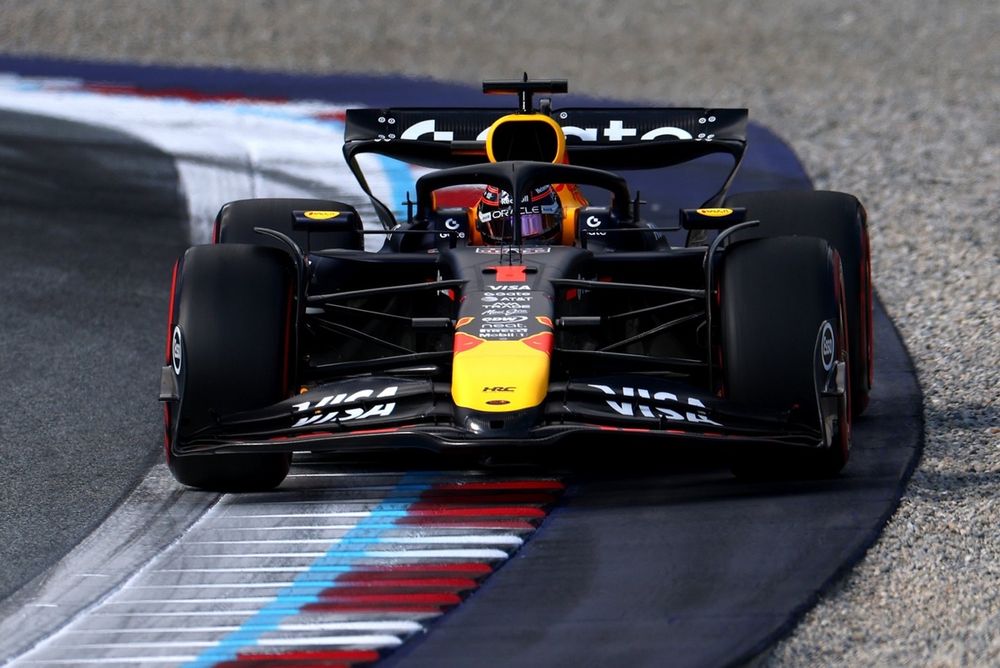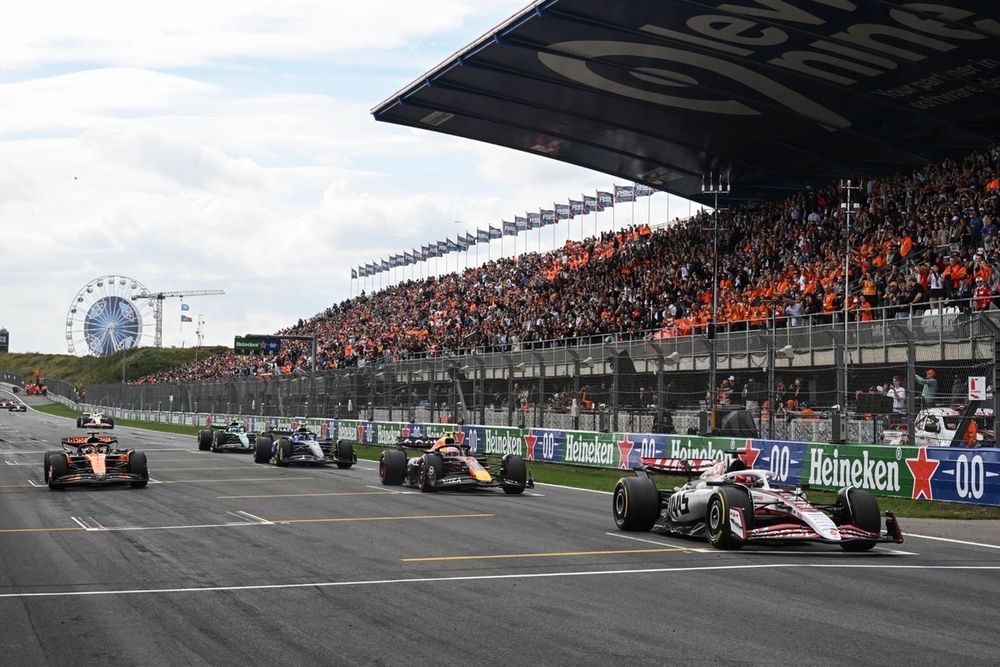Formulation 1 weekend codecs are more likely to endure radical modifications because the class adapts to cater for youthful audiences and shorter consideration spans, in response to F1 CEO Stefano Domenicali.
Packing the calendar with extra dash occasions, adjusting the format of those races, and shortening the grands prix themselves have already been mentioned with stakeholders together with the drivers. Domenicali claims a majority is now in favour of such measures.
As to followers, the message is basically ‘it is taking place whether or not you prefer it or not, get used to it’.
The modifications are coming not simply to consolidate the TV viewers, but in addition to allow race promoters to supply a bundle that can encourage ticket gross sales over the entire weekend. In the intervening time, non-sprint weekends have two one-hour F1 follow classes on a Friday, and the sensation is that merely having vehicles tootling round on observe with no underlying narrative is insufficiently interesting.
“There’s a subject on the desk in regards to the format we’ll use within the coming years, beginning with dash weekends,” Domenicali instructed choose media together with Motorsport.com.
“We have to perceive whether or not to extend them, the right way to enhance them, and whether or not to make use of completely different codecs. We’ve a number of discussions to have with the groups to determine the path.
“I’ve to say that apart from some older die-hard followers, everybody needs dash weekends. Promoters push for this format and now the drivers have an interest as properly.
Stefano Domenicali, CEO of the Formulation One Group
Photograph by: Andrew Ferraro / LAT Pictures through Getty Pictures
“I’m being a bit provocative, however free follow appeals to super-specialists; individuals who wish to see extra motion favor a dash weekend. There’s extra to debate and touch upon from Friday – there’s a qualifying session – however I perceive it has to develop into a part of F1 tradition.
“The path is obvious: I can assure that in just a few years there will likely be demand to have all weekends with the identical format. I’m not saying we’ll get to MotoGP, which has a dash at each spherical – that’s too massive a step. I see it extra as a maturation course of that respects a extra traditionalist strategy.
“As for the drivers, initially eighteen have been towards the dash and two in favour – as we speak it’s the alternative. We mentioned it on the dinner we organised in Austria and everybody spoke in favour. Even Max [Verstappen], with whom I spoke one-on-one, is beginning to say it is smart, so I see evolution from everybody. In the long run, drivers are born to race.”
If true, this is able to be a major reversal. Verstappen has been among the many most volubly important of the dash format, which was launched in 2021.
Below the preliminary format, a qualifying session on Friday set the grid for Saturday’s dash, the results of which decided the grid for Sunday’s grand prix.
In follow, although, the dash basically rearranged the sphere in tempo order, arguably detracting from reasonably than bettering the spectacle on Sunday; and the factors on supply, awarded to simply the highest three finishers, have been thought-about poor reward for the attendant dangers.
The debugging course of required two additional iterations earlier than arriving at this time format. However many drivers, together with Verstappen, have remained loudly detrimental; that dinner in Austria should have been convivial certainly.

Max Verstappen, Purple Bull Racing
Photograph by: Zak Mauger / LAT Pictures through Getty Pictures
Domenicali’s argument is that simulation expertise is sufficiently superior for groups to go with out two hours of follow on a Friday. Set off warning for delicate readers: sure, he after all talked up the probabilities of utilizing artificial-intelligence instruments with out being any extra particular.
However the temper music is that the general public will get what the general public needs – or what F1, the race promoters and the broadcasters assume they need. And that’s extra racing, much less opaque and seemingly inconsequential lappery.
“Promoters and followers need motion,” mentioned Domenicali. “And now that they’ve began to grasp it’s attainable: our surveys present the overwhelming majority of the viewers needs the drivers to battle for a consequence.
“To place it bluntly, they’re uninterested in free follow. That’s an goal truth we are able to’t ignore.”
Shorter grands prix are additionally on the agenda. This can even trigger traditionalists to chafe, though after all from the start of the world championship 75 years in the past to the tip of 1957, GPs have been sometimes as much as three hours lengthy.
To a contemporary TV viewers the 1956 Belgian Grand Prix, to select a random instance, might need brought about curiosity to sag. After two hours and 40 minutes simply eight vehicles have been working at Spa, then over 14km lengthy; victorious Peter Collins crossed the road almost two minutes forward of second-placed Paul Frere, and everybody under the rostrum positions was a minimum of a lap down.
However even present races “could also be a bit too lengthy for youthful audiences” says Domenicali.
“We’re seeing on a lot of our channels that highlights do very properly. For these of us who grew up with the present format, every part is okay as is, however there’s a big section that solely needs to see the important thing moments.

Oscar Piastri, McLaren, Esteban Ocon, Haas F1 Staff, Yuki Tsunoda, Purple Bull Racing Staff
Photograph by: Mark Sutton / Formulation 1 through Getty Pictures
“Issues are going very properly as we speak, however exactly for that motive we should not relaxation on our laurels. We want to consider the subsequent step.”
Ghastly as this will likely appear for traditionalists, worse is within the offing for the reason that reviled reverse-grid idea can also be being mooted. Domenicali justified bringing this concept again to the desk on the grounds that “in F2 and F3 this format has been round for many years”, on this case very a lot stretching the definition of the plural to imply ‘a couple of’.
“It’s on our agenda,” he mentioned. “We’ve mentioned it earlier than, however within the coming months we’ll want the braveness to push the dialogue once more as a result of I’ve heard a number of drivers suggest it.
“At first everybody was towards it, however on the final assembly a lot of them mentioned, ‘Why don’t we attempt?’
“I don’t assume there’s a single proper or flawed stance right here – each opinion has worth. We’ll consider it with the FIA and interpret an evolving pattern as greatest as attainable, that’s for certain.”
One wonders what else could also be on the desk. Deciding grid positions by drawing tons? Don’t rule it out.
The British Touring Automotive Championship adopted the same system within the mid-2010s, during which a reversed grid for the final race of the weekend was decided by drawing numbered balls out of a pot. It didn’t take lengthy for a driver to cheat, leading to Rob Austin having to apologise on stay TV at Manufacturers Hatch in 2015, after admitting to sneaking a peek within the pot earlier than drawing the quantity 10, which gave him pole place.
On this article
Be the primary to know and subscribe for real-time information electronic mail updates on these subjects


